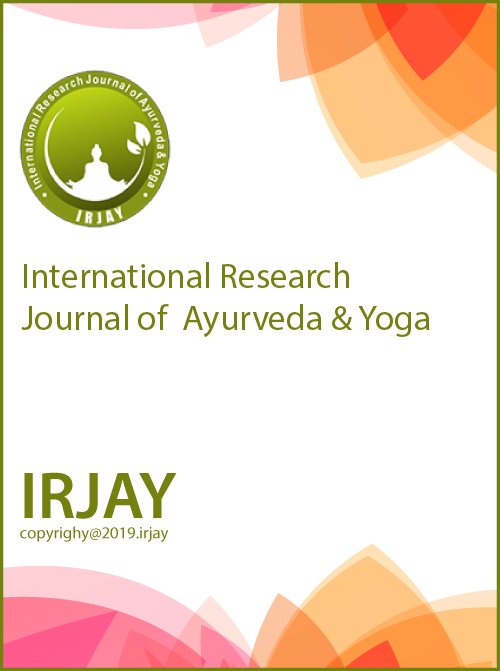Role of Nisha-amlaki In PCOS: A Conceptual Study
DOI:
https://doi.org/10.48165/Keywords:
Hormones, Insulin resistance, Nisha-amlaki, Prameha, Polycystic ovarian disease.Abstract
Introduction: Polycystic ovarian syndrome (PCOS) is characterised by excessive androgen production which interferes with the reproductive, endocrine and metabolic functions. PCOS causes hormonal imbalance in women leading to menstrual irregularities, ovulation and fertility problems1. Woman suffering from PCOS can become insulin resistant due to hormonal imbalance. Diabetes mellitus type 2 is a long term metabolic disorder that is characterized by high blood sugar, insulin resistance and relative lack of insulin. Methodology: The efficacy of Nisha-amlaki2(Astang haridya Ch. sth. 12/5) is widely recommended in Ayurvedic texts for normalizing the blood sugar level. Since the pathology of Prameha and PCOS are similar, so in this way we can use drugwhich described in texts in respective to Prameha to normalise blood sugar, also use in PCOS.Conclusion: Thus, this study is aimed at exploring the role of above given Nisha-amlaki in the treatment of PCOS.
Downloads
References
Dutta D.C., DC Dutta’s Text book of Gynaecology, 6th edition, ed. by Hiralal Konar, Nov.2013,28;p459.
Vagbhata, Ashtanga Hridaya, with commenteries of Arunadatta & Hemadri, edited by Bhisagacharya Pt. Hari Sadashiva Shastri Paradakara, 9th edition, published by Chaukhambha Sanskrit Sansthan,2005; Chikitsa sthanam, Pramehachikitsa adhayaya 12/5;p678.
Dutta D.C., DC Dutta’sText book of Gynaecology, 6th edition, ed. by Hiralal Konar, Nov.2013, 28;p459. 4Berek, Jonathan S., Berek & Novak's Gynecology, 14th edition,2007,28;1070.
Jeffcoate’s principles of Gynaecology Revised and updated by Pratap Kumar, NarendraMalhotra 7th Edition, 2008, Published by Jaypee Brother Medical Publishers (P) LTD; 23;p386.
Jeffcoate’s principles of Gynaecology Revised and updated by Pratap Kumar, NarendraMalhotra 7th Edition, 2008, Published by Jaypee Brother Medical Publishers (P) LTD; 23;p386.
Charaka Samhita (elaborated by Charaka and Dridhabala , edited by Vd. Jadavji T Acharya, with Ayurveda-Dipika Commentary by Chakrapanidatta) Nidana Sthana, Chapter 4/7, 2nd edition, published by Chaukhamba Surbharati Prakashana, Varanasi, 2005; 212.
Database of medicinal plant used in Ayurveda ; CCRAS ; Vol – 1
The Ayurvedic pharmacopoeia of India Vol - 3
B.S. Ashok Kumar, Saleemullakhan, Gopi Setty Saran, R. Nandeesh & N.K. Manjunath. In Vitro Antidiabetic Activity of Nishamalaki Churna. Sains Malaysiana,2013;42(5): 625-628.

